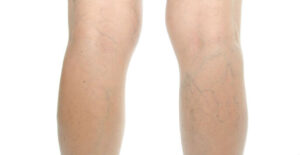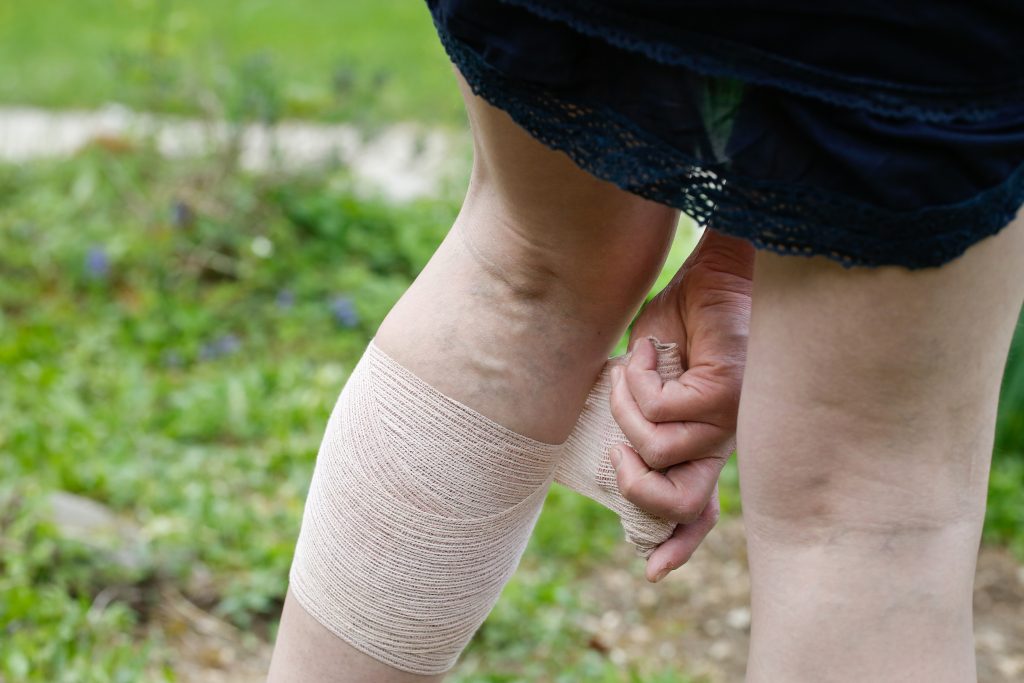Spider veins and varicose veins are two venous diseases that affect millions of people in the United States. These conditions can cause unsightly features to develop, and can even become painful if the underlying causes are not treated.
 No matter which way you look at it, vein removal procedures in Miami will be top on your list the moment you or your family members notice those veins creeping up your legs. Whether they are spider veins or varicose veins, they’re not attractive, and in many cases – not healthy.
No matter which way you look at it, vein removal procedures in Miami will be top on your list the moment you or your family members notice those veins creeping up your legs. Whether they are spider veins or varicose veins, they’re not attractive, and in many cases – not healthy.
At Fox Vein and Laser Experts, a leading vein center Miami, we’ve helped thousands of clients treat venous disease and remove those deep veins. But before you make the decision vein removal treatment Miami, it’s important to understand the difference between spider veins and varicose veins.
What Causes Spider Veins?
Spider veins – the kind you notice in small groups underneath your skin, are not just reserved for the legs. According to Web MD, Spider veins are smaller, red, purple, and blue vessels that also twist and turn. Spider veins are easily visible through the skin, as well. They are typically visible on the legs and face. Since spider veins are smaller and usually less extreme than varicose veins, there isn’t always a sense of urgency to remove these – but beware, as they spread quickly and almost 60% of people with them have symptoms.
What do spider veins look like?
1) A cluster of small, dilated veins that appear close to the surface of the skin.
2) Spider webs or branches, usually red or blue in color.
What is the difference between Spider veins and Varicose Veins?
Varicose veins tend to be larger than spider veins. These include the larger veins responsible for supplying tissues with a larger amount of blood. These also tend to be deeper in the skin than the blood vessels responsible for spider veins, but their expansion tends to be larger. This is why varicose veins are often felt rather than seen. They can cause everything from rigid bumps to painful swelling.
What do varicose veins look like?
1) Veins that are dark purple or blue in color
2) Veins that appear twisted and bulging; often like cords on your legs
Facts About Spider & Varicose Veins
1) Veins transport blood requiring oxygen back to the heart
2) Varicose Veins can cause discomfort or leg ulcerations
3) Varicose Veins are due to failing vein valves or weakened vein walls
4) Veins are usually not dangerous
5) Spider Veins are formed in capillaries – tiny blood vessels, one blood cell in thickness
Did you think varicose veins and spider veins were the same? You’re not alone.
If you’re like most people, you use the terms varicose veins and spider veins interchangeably. In fact, however, these two conditions are quite different, with varying causes and treatment options. Read on to learn more about the characteristics that distinguish varicose veins from spider veins.
1) Both varicose veins and spider veins are blood vessels that twist and turn and are easily visible through the skin. However, varicose veins are much larger and swollen, raised above the surface of the skin, typically appearing only on the legs.
2) Some women develop varicose veins in the pelvic area during pregnancy. Spider veins are much smaller and can appear on the legs as well as the chest and face.
3) Varicose Veins are usually caused by damage to the valves in the veins, which causes blood to back up within the vessels. While this condition can cause spider veins as well, the smaller visible veins are also caused by hormones, sun exposure, and injury to the affected area.
4) Spider veins are more common among those who are frequently exposed to the sun.
Spider veins rarely cause symptoms, though they are occasionally linked to minor itching and burning. However, varicose veins can lead to other medical complications.
Risk Factors of Varicose Veins and Spider Veins:
However, the two types of veins share many similar risk factors. You are more at risk for developing visible veins if you are older than age 50, have a family member who has varicose or spider veins, are undergoing hormonal changes, are pregnant, or are obese.
While spider veins and varicose veins are similar in the cause, there are some differences that may make you want to have varicose veins treated first, if you are facing that decision. Both conditions are the result of blood backing up in the veins and causing them to become enlarged and visible through the skin.
While similar to spider veins, varicose veins are larger and often cause bulges to stick up at the skin’s surface. They happen most frequently in the legs. The reason is that the legs are further from the heart than most other body parts. In addition, since they are lower to the ground in relation to the heart, the blood must be pumped against the pull of gravity in order for it to be returned to the heart and lungs. This gravitational pull consequently tends to make the blood in these vessels flow backward.
There are some valves in the veins that are there to counteract this tendency and make sure the blood can only flow in the right direction. When these valves stop working as they should, the resulting backup of blood in the veins causes it to pool. This leads to the development of varicose veins that twist and turn. The condition can at times be discomforting and even painful.
Spider veins, on the other hand, are smaller and typically do not cause any threats to an individual’s health. They can cause an appearance that makes many people want to have them treated. Unlike varicose veins that appear predominantly in the legs, spider veins are common on the legs, chest, and face. They are also visible through the skin, giving an appearance that resembles a spider’s legs as they twist and turn, sometimes with jagged corners.
If you have varicose veins, you may experience aching, throbbing pain in the affected area. Left untreated, these veins can lead to sores or skin ulcers, significant blood loss in case of injury to the area, a superficial blood clot, or deep vein thrombosis (which can be life-threatening).
Varicose Veins vs Spider Veins Treatments
If you are experiencing varicose veins or spider veins and are wondering about treatments for one or the other, there is good news. Treatments are available for both. If, however, you have both conditions and are struggling over which condition to have treated first, there are some things you may want to take into consideration. When it comes down to treatment options for spider veins vs varicose veins, there are some differences.

If you have either of these conditions and are apprehensive about a treatment that involves surgery, other options are available. Laser treatments are frequently performed to remove spider veins and varicose veins. This is done by using a laser unit to emit highly-concentrated beams of light into the targeted vessels. The heat produced by the laser destroys the vein. It will then be absorbed by the body and disappears in a few weeks.
Sclerotherapy is perhaps the oldest treatment method in use today that is done for both varicose veins and spider veins. It is performed by injecting a solution into the veins that are to be removed. This solution causes the walls to collapse and stick together. The vessels then disappear in a short time.
Contact us at Fox Vein & Laser Experts
When it comes down to the different treatment options for spider veins vs varicose veins, there is not one-size-fits-all technique. If you are struggling with either or both of these conditions and are wondering what options are available, have a conversation with our professionals at Fox Vein & Laser Experts, with offices in Pembroke Pines and Hollywood. We can evaluate your condition and help you decide which treatment method is best for you.
Dr. Susan Fox, owner, and founder of Fox Vein & Laser Experts says, “The ultimate complaints about spider veins are that they’re aesthetically unpleasing, especially in an aesthetic conscious area like Miami Beach, but with varicose veins, there are some physical issues that present as well. Painful signs and symptoms of varicose veins, such as an achy or heavy feeling in your legs burning, throbbing, muscle cramping and swelling in your lower legs or worsened pain after sitting or standing for a long time, make varicose vein removal a priority.”
So, how does Fox Vein and Laser Experts remove varicose and spider veins safely and effectively?
Spider veins typically require more precise treatments, like laser vein treatment Miami, ambulatory phlebectomy direct injections, which in turn seals the veins. Varicose veins often require a more robust approach. Foam Sclerotherapy, for example, sticks to the walls of the vein on the treated area. This allows the vein lining to become inflamed and to gradually seal shut. Venaseal is where a crazy glue is injected into the veins which cause the veins to seal shut. Endovenous laser Ablation is where a laser is placed inside the vein that heats the vein and closes it off. Clarivein is where a wire is placed inside the vein to irritate the vein lining and then a solution is injected which causes the vein to scar shut. Phlebectomy are used in some instances to remove tortuous ropey unsightly veins. This is where extremely tiny incisions are made and the vein is sealed shut. All of these procedures in turn diminish the blood flow past the treatment area. This allows varicose veins to be absorbed by the body.

